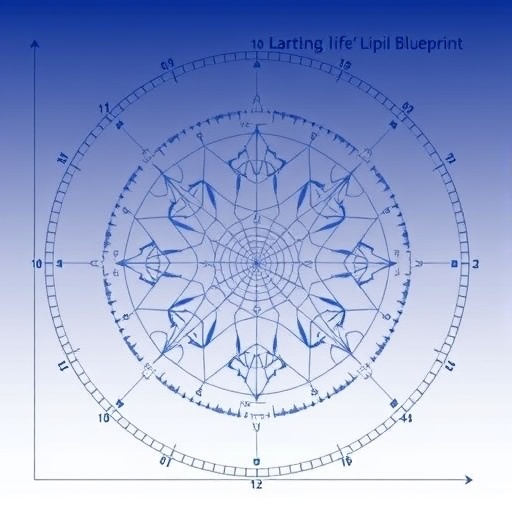
In the grand theater of embryonic development, DNA and proteins have long claimed center stage, orchestrating the complex dance that transforms a single cell into a fully formed organism. Yet, behind the scenes, a subtle but crucial player has remained largely unrecognized: lipids. These fat molecules, often dismissed merely as energy reserves, are now emerging as vital architects of embryogenesis, influencing not just the structural integrity of developing tissues but also acting as sophisticated signaling agents that guide the timing and patterning of organ formation.
Despite remarkable progress in genomics and proteomics, the metabolic landscape during embryonic development remains shrouded in mystery. Among the layers of metabolic regulation, lipids present a formidable challenge. Their vast structural diversity and dynamic functions complicate efforts to chart their spatial and temporal distribution within a developing organism. Traditional approaches have delivered only fragmented glimpsesâisolated snapshots that fail to reveal a coherent map of lipid dynamics, limiting our understanding of their role in normal development and disease.
Confronting this gap, a visionary team at the Ãcole Polytechnique Fédérale de Lausanne (EPFL) has pioneered a transformative method to decode the lipidome of vertebrate embryogenesis in unprecedented detail. By focusing on the zebrafish, a model organism prized for its transparency and developmental parallels to humans, the researchers have unveiled the first-ever four-dimensional lipid atlas. This “4D” approach integrates three-dimensional spatial resolution with the time dimension, capturing how lipid landscapes evolve during the critical stages of embryonic growth.
Central to this breakthrough is the application of matrix-assisted laser desorption/ionization (MALDI) mass spectrometry imaging. This technique allows scientists to scan thin tissue sections and detect thousands of molecular species simultaneously, preserving the spatial context of each lipid. However, translating raw MALDI data into meaningful biological information is akin to solving a vast, intricate puzzle. The spectral data generated are immense and noisy, demanding sophisticated computational strategies capable of aligning and normalizing results across multiple samples and developmental time points.
To surmount these computational hurdles, the EPFL team developed uMAIAâunified Mass Imaging Analyzerâa robust algorithmic framework designed to extract, harmonize, and interpret complex lipidomics data. uMAIA performs adaptive image extraction, effectively distinguishing true biological signals from background noise. It matches similar lipid molecules between adjacent tissue sections and stages, correcting for technical variability inherent to mass spectrometry imaging. This powerful tool converts chaotic datasets into coherent, high-resolution movies that visualize lipid distribution dynamics from early embryonic nuclei to fully differentiated fish anatomy.
The resulting lipidome atlas reveals a striking organization of lipid species, mirroring the underlying anatomical structures and developmental cues. For instance, certain sphingolipidsâkey components of cell membranes and crucial signaling mediatorsâaccumulate selectively in the swim bladder, a rudimentary organ analogous to human lungs. Elsewhere, distinct lipid signatures localize to developing brain regions and osteogenic zones, implicating lipids as active participants in shaping organ identity and function. These spatial patterns underscore the instructive role of lipid metabolism, extending beyond cell energetics to influence morphogenetic processes.
Such precise mapping of lipid dynamics offers profound implications for developmental biology and medicine. Aberrations in lipid metabolism are implicated in a spectrum of congenital disorders, yet until now, the spatial and temporal origins of these defects remained elusive. By pinpointing where and when critical lipid species emerge, this atlas provides an essential baseline for identifying pathological deviations. Furthermore, it opens new avenues for regenerative medicine and tissue engineering by informing strategies to manipulate lipid environments for tissue repair and growth.
The significance of this work resonates beyond developmental biology, touching upon diverse diseases where lipid metabolism is disruptedâcancers, neurodegenerative diseases such as Alzheimerâs, and metabolic syndromes. With this comprehensive lipid atlas serving as a reference, researchers can more precisely chart disease-induced metabolic shifts, potentially revealing novel biomarkers or therapeutic targets.
Gioele La Manno, one of the studyâs principal investigators, emphasizes the versatility of the approach: âFrom this effort emerges not only a powerful resource but a Swiss army knife for doing this kind of mapping again and again across other systems in health and disease.â This adaptability hints at a future where metabolic atlases become integral tools across biomedical research, transforming how we visualize and understand cellular physiology.
The studyâs computational innovations blend seamlessly with physical imaging techniques, exemplifying the growing synergy between experimental biology and computational data science. By harnessing high-throughput mass spectrometry and sophisticated algorithms, the team transcended conventional limitations, offering a template for future efforts to map other complex molecule classes at comparable resolution and fidelity.
Moreover, this investigation highlights the often-underappreciated role of lipids as dynamic, regulatory entities during embryogenesis. Far from passive structural components, lipids emerge as essential drivers that demarcate tissue identities, influence cell behavior, and coordinate developmental timing. This paradigm shift invites a reevaluation of lipid metabolismâs place in developmental biology curricula and research priorities.
The zebrafish model not only exemplifies vertebrate development but also facilitates rapid, comprehensive sampling across developmental stages, enabling richer temporal profiling than would be feasible in mammalian models. The ability to combine spatial and temporal lipidomics opens a new frontierâcapturing the choreography of metabolism as it naturally unfolds within living organisms.
This landmark study, published in Nature Methods on September 3, 2025, represents a convergence of technological innovation and biological discovery. Its multidisciplinary approachâmelding mass spectrometry imaging, computational biology, and developmental physiologyâsets a precedent for the field, promising to propel our understanding of metabolic regulation to new heights.
Future research inspired by this work is poised to delve into how lipid metabolism interfaces with genetic and proteomic networks, potentially elucidating mechanisms underlying metabolic diseases and developmental disorders. The uMAIA frameworkâs adaptability encourages its deployment across various tissues, species, and pathological states, heralding an era of comprehensive metabolic cartography.
In summation, the generation of a 4D lipid atlas of vertebrate embryogenesis is not merely a technical accomplishment but a profound leap toward decoding the metabolic symphony that orchestrates lifeâs earliest stages. By illuminating the spatial and temporal dimensions of lipid metabolism, this study transforms our grasp of developmental biology, opening fresh vistas in biomedical science and translational medicine.
Subject of Research: Lipid metabolism mapping during vertebrate embryonic development
Article Title: Unified mass imaging maps the lipidome of vertebrate development
News Publication Date: 3-Sep-2025
Web References:
https://www.nature.com/articles/s41592-025-02771-7
http://dx.doi.org/10.1038/s41592-025-02771-7
References:
Halima Hannah Schede, Leila Haj Abdullah Alieh, Laurel Ann Rohde, Antonio Herrera, Anjalie Schlaeppi, Guillaume Valentin, Alireza Gargoori Motlagh, Albert Dominguez Mantes, Chloe Jollivet, Jonathan Paz-Montoya, Laura Capolupo, Irina Khven, Andrew C. Oates, Giovanni DâAngelo, Gioele La Manno. Unified mass imaging maps the lipidome of vertebrate development. Nature Methods 03 September 2025. DOI: 10.1038/s41592-025-02771-7
Keywords: lipidomics, embryonic development, MALDI imaging mass spectrometry, zebrafish model, metabolomics, computational biology, uMAIA algorithm, sphingolipids, developmental biology, metabolic atlas, regenerative medicine, tissue engineering
Tags: embryonic lipidome mappingEPFL research on lipidsinnovative methods in lipid researchlipid dynamics in vertebrate embryoslipid metabolism in embryonic developmentlipid signaling in developmentmetabolic regulation in embryogenesisrole of lipids in organ formationsignificance of lipids in tissue integritystructural diversity of lipidsunderstanding lipid functions in developmentzebrafish as a model organism




